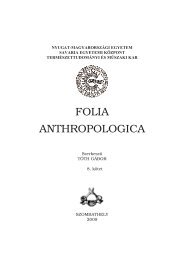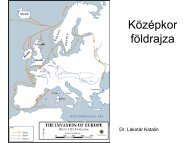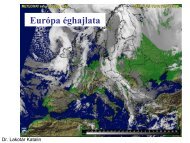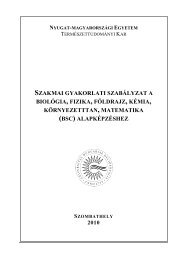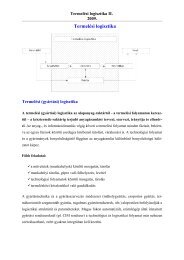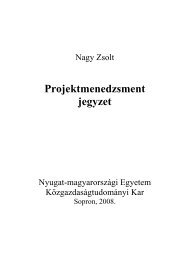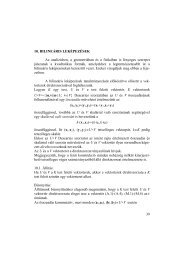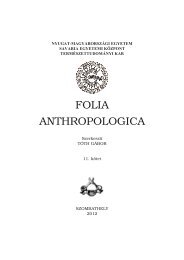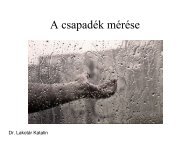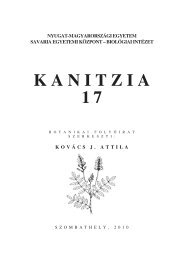You also want an ePaper? Increase the reach of your titles
YUMPU automatically turns print PDFs into web optimized ePapers that Google loves.
Folia Anthropologica 4; 103−104. (2006)<br />
PhD ÉRTEKEZÉS TÉZISEI<br />
HUMAN MORPHOLOGICAL VARIATIONS<br />
OF FACES AND SKULLS<br />
(ANALYSIS OF THE MORPHOLOGICAL RELATIONS OF THE<br />
SKULL AND THE FACE)<br />
Kustár Ágnes<br />
Magyar Természettudományi Múzeum, Embertani Tár, Budapest<br />
Face reconstructions are made for two purposes: first, as an auxiliary device of forensic personal<br />
identification, or for illustrating the outlook of some past population. Three major methods are known:<br />
the draft technique, the plastical process and the computerized method recently allowing virtual presentation<br />
in space.<br />
The various methods of face reconstruction include directives based on scientific analysis, spreadsheets,<br />
as well as scientifically not controlled subjective observations. This has resulted in a number of<br />
technical uncertainties allowing us to draw only moderate conclusions. There is no doubt that these<br />
procedures could hardly be standardized because of the differences among races and sexes, as well as<br />
the innumerable individual variations. At the same time researchers in field and those who practice the<br />
face reconstruction agree that a lot can be done in the future to improve the accuracy of the methods,<br />
first of all by deeper exploring the correlations of the skull and soft tissues characteristics.<br />
Within the framework of this study I attempted to contribute to the clearing of some 'white spots'<br />
by analysing the morphological and metric relations of the skull and the soft parts. I started from the<br />
thesis that the majority of facial features has some bony anatomic basis, and most morphological<br />
features have actual 'imprints' on the bones. I was looking for answers for the question whether the<br />
selected facial features (morphological variations of soft parts) could be brought into connection to<br />
bony structures (skeletal morphological variations), that is how frequently do individual combinations<br />
occur. In this study the correlations of bone and soft parts variations were examined by comparing the<br />
skulls and death masques of 100 individuals (Terry Collection of the Smithsonian Institution,<br />
Washington D. C.).<br />
On the sample I have observed the variations of 43 morphological characteristics on the skull and<br />
54 on the face (97 in total). In order to explore the morphological combinations of the skull and the<br />
soft parts I have analysed 207 pairs of characters by utilizing G-tests (Goodness of fit test). The<br />
distribution of 80 such pairs indicated significant correlations.<br />
Summarizing the results of the morphological analysis I managed to identify a total of 29<br />
tendencies in the ditstribution of morphological characteristics of the facial skeleton and the soft parts,<br />
including 15 for the nose, 10 for the mouth, 2 for the chin, 1 for injuries suffered and 1 for<br />
asymmetries (on the nose and on the nasal cavity here examined). In other 51 cases in spite of a certain<br />
significance the frequency values produced no clear tendency, presumably because of the large<br />
number of variations within the comparatively small sample.<br />
Summarizing the results in the metric analysis of the nose it became evident that the absolute<br />
measurements of men are larger for both races. Racial differences (between europids and negrids)<br />
presented themselves in measurements as well as in indices. Thea nasal cavity and the outer nose of<br />
negrids are both wider than those of europids, while the nasal height measurements of the two races<br />
103




